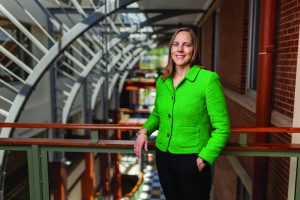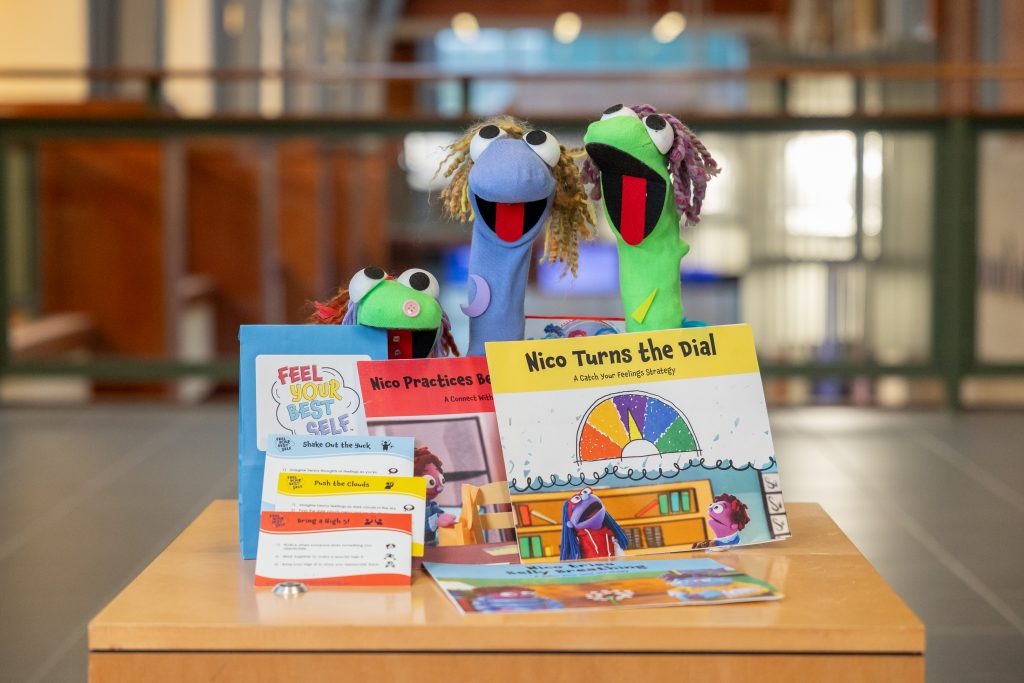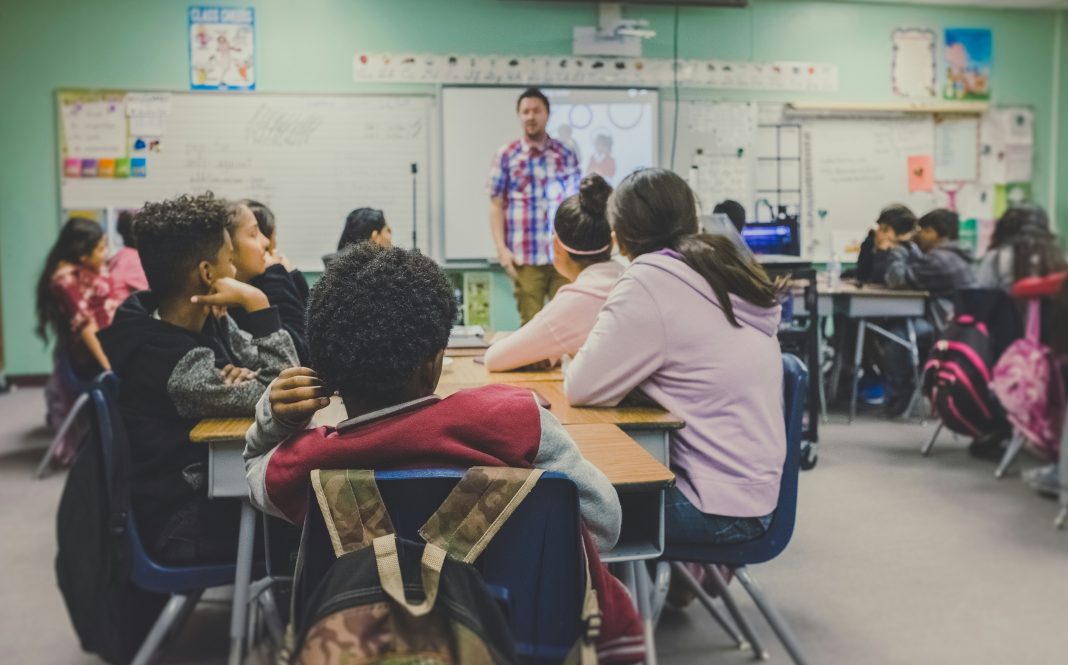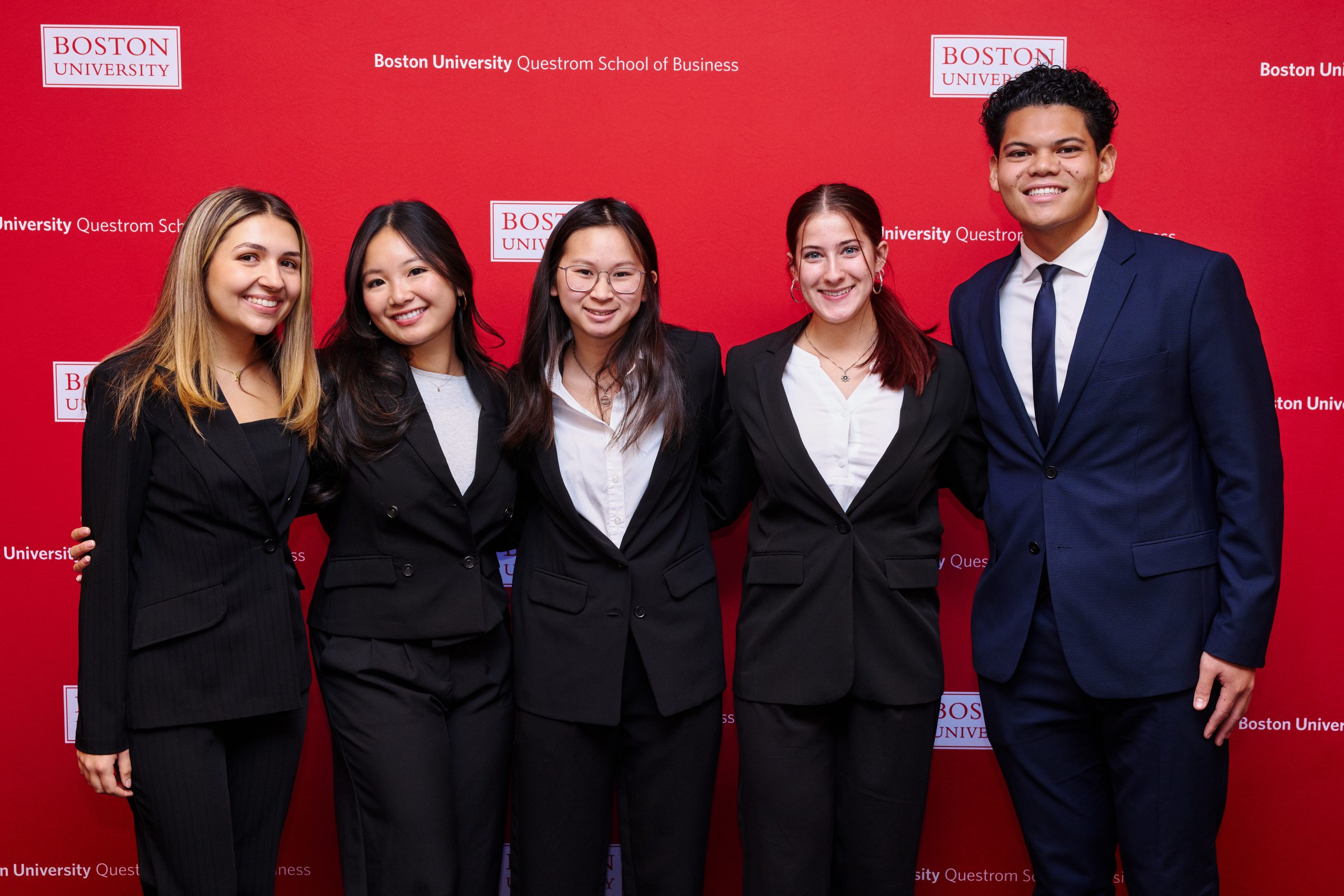During the COVID-19 pandemic, over 500,000 K-12 students in Connecticut had to rapidly pivot to remote and hybrid learning. Now, after five years, schools have reestablished their regular rhythms, and it’s easy to imagine that the pandemic’s effects on learning have subsided along with social-distancing and mask mandates.
But unfortunately, this isn’t the case for many students, says Morgaen Donaldson, the Associate Dean for Research and Philip E. Austin Endowed Chair of the UConn Neag School of Education.

“COVID really drove a huge wedge [among students],” Donaldson says. “There were big gaps in learning and achievement between different groups to begin with, but COVID just made them even worse. And if we have any hope of closing them, we have to start by meeting students where they are.”
For the past five years, Donaldson has worked to investigate and address the pandemic’s effects on student performance and well-being. She is the co-director of the Center for Connecticut Education Research Collaboration (CCERC), an innovative partnership between the Connecticut State Department of Education (CSDE) and researchers from Connecticut’s colleges and universities.
Along with her co-director, CSDE Chief Performance Officer Ajit Gopalakrishnan, Donaldson works to identify the issues currently faced by K-12 schools, develop research studies to analyze them, and ultimately design solutions.
Donaldson’s own research career has focused on educational leadership, teachers’ instructional practices, and district policy, drawing on her own background as a former high school teacher. Now, she is leveraging her expertise to understand the problems teachers are facing.
“I’m doing some of my own research, but also playing a facilitating and directing role,” she says. “We’re working to identify topics that are pressing needs in the state, finding researchers with relevant expertise within the state and creating research teams that will investigate these problems and produce solutions that are really practical.”
Uniting Researchers and Educators
The CCERC’s research has revealed that many pre-pandemic disparities were exacerbated by the pandemic and have been slow to improve.
Particularly worrisome is the rate of chronic absenteeism in the state, defined as a student missing 10% or more school days in a year. The state average chronic absenteeism rate was around 10% prior to the pandemic; in 2021-2022, when in-person schooling resumed, that rate jumped to nearly 24%. Data from the 2023-2024 school year shows that it decreased (to 18%) but is still nearly double pre-pandemic levels.
Even when students are physically showing up for class, the echoes of the pandemic can still be heard in school hallways. Performance gaps between white students and students of color, for instance, widened; so did the academic disparities affecting English language learners and students on free or reduced-price lunch.
While these disparities are decreasing, they still eclipse pre-pandemic levels. Not every student – and not every school — has been equally able to bounce back. Financial resources certainly help shore up this kind of resilience, and it is a truth universally acknowledged within public education that not all schools have equal access to these resources.
In an effort to support communities that were hardest hit, the Neag School of Education has partnered with Connecticut’s Alliance Districts – 36 school districts across the state which have identified the most challenges in funding, retaining educators, and student performance.
“We’ve done rapid research briefs to answer problems in their districts,” Donaldson says. Neag’s connection with Alliance Districts has facilitated the work of CCERC. “We kind of have a beat on what they’re struggling with, so we can say to the state department, ‘People really want to know more about high-dosage tutoring,’ or, ‘Attendance is a real issue.’”
Creative problem-solving, in partnership with school districts, is a hallmark of the CCERC’s approach. One state intervention, the Learner Engagement and Attendance Program (LEAP), employed a strategy of home visits to address attendance challenges. CCERC has supported an evaluation of LEAP’s impact on student attendance and other key outcomes.
LEAP attracted national attention in publications like the New York Times for its staggering success – increasing school attendance by nearly 15% among targeted students, essentially closing the gap between chronic absenteeism and a typical student attendance record.

Thinking Outside the Box
If there’s a silver lining to how the pandemic upended education, Donaldson says, it’s how educators seized the opportunity to support whole-student development.
Based on her team’s surveys of over 1000 Connecticut teachers, “Teachers reported that they were much more likely to use socio-emotional learning strategies in the classroom than they were prior to the pandemic,” she says. “And many, many teachers reported that they took a different stance towards students – they really approached them with the socio-emotional lens in mind first, before they focused on academics.”
Research from the CCERC helped design and deploy creative solutions to support whole-student wellbeing – especially crucial at a time when so many students were experiencing profound loneliness, uncertainty, and grief. Elsewhere in UConn’s Neag School, researchers also worked to develop socio-emotional supports, like the award-winning Feel Your Best Self toolkit.
With her work at the CCERC and as a leader and professor at the renowned Neag School, Donaldson is dedicating her career to this cause, helping public education weather each and every storm.
“We have to keep investing in public education, and keep working at improving it,” Donaldson says. “I would really like to see Connecticut double down on its commitment to developing, recruiting, and retaining a top-notch teacher workforce, because that’s what will really help us rebound.”



